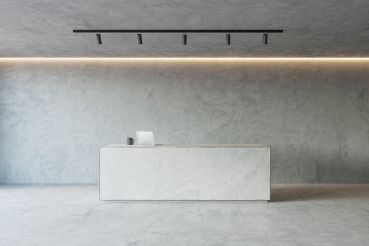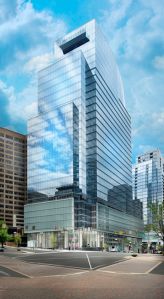In the Zone: PTM’s Michael Tillman Sees Opportunity in OZs
By Christina sturdivant-Sani May 29, 2019 4:25 pm
reprints
Growing up in a Long Island neighborhood with few green spaces, Michael Tillman quickly learned that the community around you has a big impact on who you become.
For Tillman, the CEO of commercial real estate private equity firm PTM Partners, it makes sense that a new career dedicated to opportunity zones would make sense.
From 2004 until 2010, Tillman worked as a senior member of Aetos Capital’s investment platform in China where he evaluated over $5 billion of large-scale real estate development projects. He’s also a founding member of the firm’s Asia real estate securities opportunity fund, a $500 million hedge fund invested in real estate and real estate-related securities across Asia.
In a recent interview with Commercial Observer, Tillman said that working for Aetos Capital offered an opportunity to see firsthand how utilities that some people may take for granted, like consistent running water and electricity, play a vital role in the quality of life for people who are experiencing subpar living conditions.
Tillman left Ateos Capital to work for LeFrak as a managing director of acquisitions and development. In this position, he oversaw the underwriting, execution, construction, development and condo sales of 1 Hotel South Beach—a 1.8-million-square-foot mixed-use luxury hotel and condominium that focused on sustainable living. He also managed the restructuring, entitlement and development of SoLe Mia, a 184-acre mixed-use development with 5,000 residential units and 1.5 million square feet of commercial space in North Miami which focused on green spaces, wellness and sustainability.
While working on SoLe Mia, Tillman became familiar with opportunity zone legislation when he learned that the development’s underdeveloped area might be designated for tax breaks through the 2017 Tax Cuts and Jobs Act.
At the time, there were no cranes in North Miami, Tillman said, “so this project was and is a tremendous catalyst in that community. The opportunity zone legislation allowed for the area [to attract] other investors and developers in the community which immediately started to create a new sense of place.”
Tillman co-founded PTM in 2018 with $125 million to invest in opportunity zones projects. As its second investment, PTM recently went in on Douglas Development’s 1900 Half St. SW project in Washington, D.C.’s Buzzard Point neighborhood. The project will convert a nine-story office building that previously housed the U.S. Coast Guard into a 453-unit apartment building with 17,000 square feet of retail. It’s expected to deliver as early as summer 2020.
Tillman, 38, who lives in South Miami with his wife and three children, shared more about his concept of social impact and outlook on PTM’s future investments in D.C.
How did PTM come about?
PTM is a partnership between myself and two partners on the real estate side, Scott Meyer and Nick Pantuliano. We all worked together very closely for LeFrak for about 35 years. We partnered up with a group out of Bethesda [Md.] that was looking to solve a problem for their capital gains. They were looking to reinvest into various strategies and one thing that had come up was opportunity zones.
What I realized, coming out of my background doing real estate in Asia [and] seeing the impact we have on the environment and the broad market acceptance of brands like the 1 Hotel, is that there’s an avenue for me to do exactly what I love to do, which is to identify opportunities in markets where I see growth potential but [where] there haven’t been significant developments, and to focus on doing long term development where we create real impact.
What’s the name of the firm in Bethesda?
It’s one of our investors. I unfortunately can’t release that name.
How does PTM choose where to invest?
Scott, Nick and I have built out a mapping tool which takes all 8,700 opportunity zones and layers in a bunch of demographic data layers—GDP per capita, average household size and then a few things that are not as obvious which we like to call our secret blend of herbs and spices. Those let us look from a top-down approach to identify opportunity zone markets where growth trends seem to be moving in the right direction. Then we do a more bottom-up fundamental analysis and identify sites that may be interesting for certain purposes.
What makes PTM unique among other investment firms specializing in opportunity zones?
We’re a hybrid. We’ve had the amazing experience collectively of working for top-quality developers like the LeFraks, so we know how to build and we can either execute on our own or we can co-develop with partners in markets where we may not be on the ground 100 percent of the time like in D.C., where we get to work with a group like Douglas Development, which is a tremendous honor for us.
How did PTM connect with Douglas Development?
I was introduced to Norman [Jemal] by a mutual friend and we philosophically got along very well. We think similarly about real estate, investment, the market and building for the client. He saw how excited I was about the project they were doing in Buzzard Point and we were able to figure out a deal to co-develop and turn an amazing building into a really fantastic multifamily project with 400-plus units right on the Anacostia River.
What was PTM’s investment in the project?
The development is approximately $190 million, of which the equity component is about $46 million to $50 million—we’re 50-50 partners.
What does social impact look like at PTM?
I think one of the biggest benefits of the opportunity zone legislation is that it’s encouraging developers to think about the social impact of their projects. Developing projects that positively contribute to their immediate neighborhoods should become the norm. LEED and green building standards have found their way into municipal building codes [but] developers should be thinking about their projects’ broader contribution to the community.
I look at positive social impact, meaning a community is made better as a result of our development project going there and that can mean opportunities like job creation during construction, it can mean long-term uses of the building or it can be providing neighborhood resources that didn’t necessarily exist and are now serving the broader community. I also think it can mean the design of a building contributing to the life blood or vitality of the community and the safety of a community.
Use Buzzard Point for example, the more people who are living there, naturally the more residential it becomes and the safer-feeling of a community it becomes. Not that it’s dangerous but when you’re walking around streets at night and there’s nobody there, it doesn’t feel safe.
I always use the terms of being inclusive, equitable and intentional and if you do those things, the real estate project doesn’t just raise the profile of the building, it raises the profile of the neighborhood that it sits within. We think that way about all of our projects and hope that they demonstrate that.
Have you gotten pushback on the Buzzard Point project or investments in other cities regarding potential displacement of longtime residents?
No. Again, going back to those three points—inclusion, equitable and intentional. Being inclusive means talking with the neighborhood, making clear our objectives and making sure they are in line and encompassing the local stakeholders. And what I’ve found over the years having had the benefit of doing large-scale mixed-use projects in neighborhoods where shovels had not gone in the ground is that if you are able to garner the support of the local stakeholders in a way where they see the long-term goals aligned, there’s benefit for them in the product that you’re delivering and there’s benefit to them in the broader neighborhood. Then everyone wins and I think it makes everything more valuable, not just the asset.
So besides the safety component, how else will the Buzzard Point project create positive social impact?
The biggest component is that we’re creating this modern environmentally friendly multifamily building and breathing a second life into an asset that has sat there dormant for years. We’re going to be bringing vitality over to that piece of the waterfront which has been completely quiet, from what I understand, [for] a very long time.
Do you think you’ll continue to invest in Buzzard Point?
If opportunities arise in Buzzard Point, we would certainly consider it. I think that submarket is really fantastic—geographically, entertainment and experiential-wise. You have Audi Field, the Wharf, Nationals Park and Navy Yard. They’re putting in some green space and expanding the Frederick Douglass Bridge. And the new announcement by PN Hoffman [is] that they’re going to be developing some kind of entertainment complex by Audi Field. It’s a well laid out area—streets are a true grid over there so it’s walkable. I think that there’s a lot of opportunity there.
Do you have your eye on any other opportunity zone areas in D.C.?
It’s been interesting. There’s been a lot of opportunity zone investment in the suburbs—Northern Virginia and suburban Maryland. I think there will be renewed interest in D.C. and we’re certainly [looking] but I can’t say [where] yet.
D.C. has always been an interesting market—you have the largest employer in the country there but the growth of tech in D.C. has given it the label of this innovation ecosystem, a great term that JLL coined. It’s driving productivity which leads to economic growth and that growth implicitly creates demand for real estate. So I really love the long-term prospects of D.C. It’s great—opportunity zone or not.


